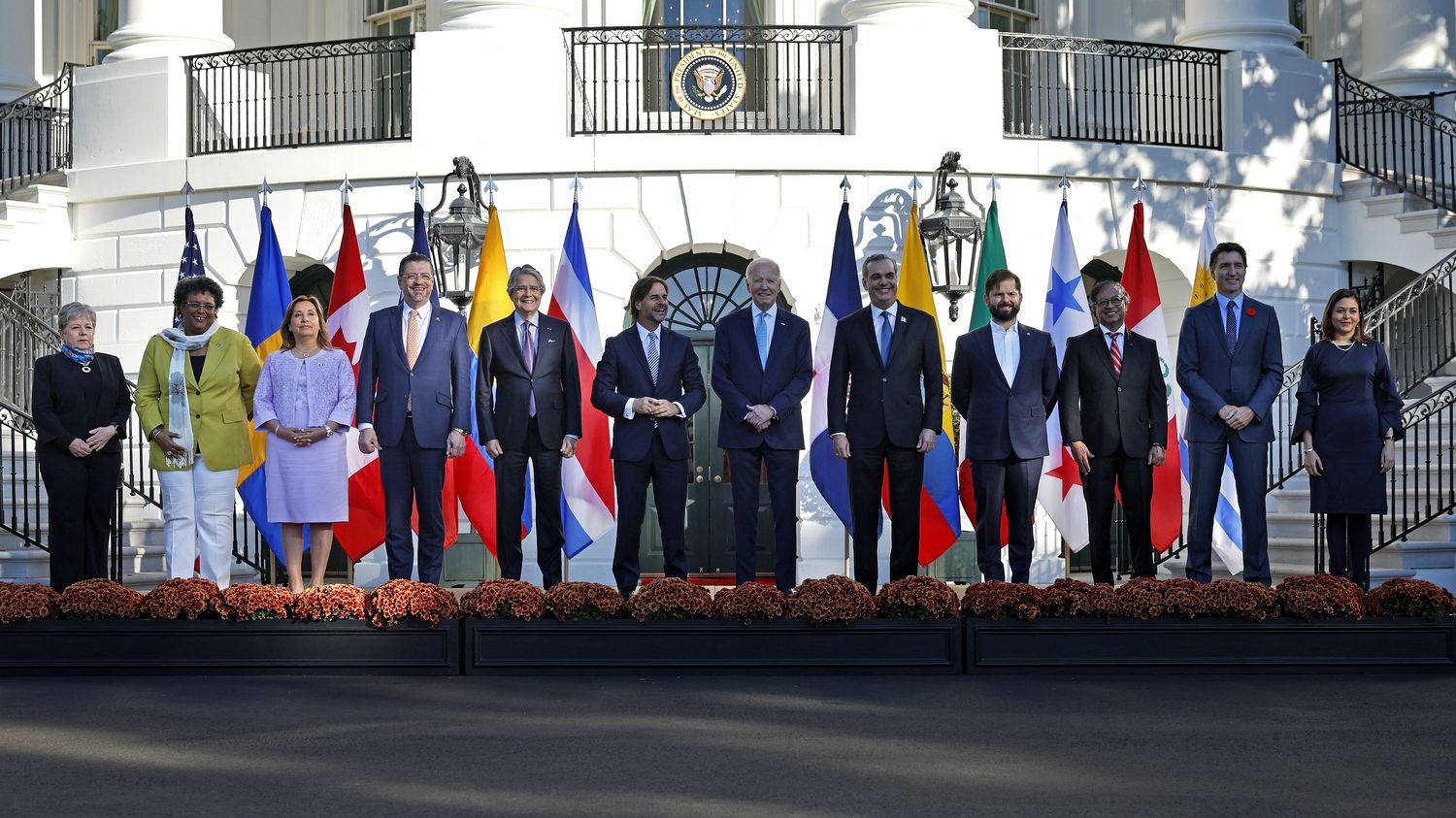The first-ever summit of the Alliance for Economic Prosperity of the Americas takes place on Friday, November 3 in Washington. It brings together eleven American countries.
This new alliance, founded during the last Summit of the Americas, at the initiative of Joe Biden, brings together 11 American countries. This first summit of the Alliance for Economic Prosperity of the Americas has two objectives for the United States, competition with China and curbing emigration from countries in the South.
Mexico is directly affected by the economic measures that the American president wants to put in place. The idea is to work on the economic integration of the entire region as a lever to curb emigration. But Mexico, like other countries, will demand concrete measures from the United States. Migration is a crucial issue for Washington, constantly used by Republicans to attack Biden. And the latter will not fail to criticize Mexico for the advance on its territory of a new caravan of migrants: 7,000 people marching towards the border with the United States, while we are already observing this year a migratory flow of an unprecedented scale in the region.
Mexico’s demands
On the commercial front, Mexico has different demands from the countries of South America, since last year it has been the leading trading partner of the United States, ahead of Canada and China. Last year, trade between the two countries represented 855 billion dollars. But Mexico aims much more, via the principle of “nearshoring”, which opposes relocation. It is in fact a form of local relocation where the United States repatriates production centers installed in Asia to Mexico.
During a meeting ahead of the summit, Alicia Bárcena, the Mexican Minister of Foreign Affairs, expressed the ambition to see the United States relocate to Mexico the production of electronic components, conductors and semiconductors which are currently manufactured in Mexico. Asia. She also put forward the pharmaceutical industry and that of renewable energies as targets of the “nearshoring“.
The United States, an essential partner of Colombia
For decades, the United States has been Colombia’s main export market. They represent 26% of total exports, but also 31% of Colombia’s non-mining and energy exports and 37% of services exports. These economic relations are essential for both countries. Indeed, Colombia plays an important role in the supply chain of North American industry products.
With the coming to power of a new left-wing president, Gustavo Petro, diplomatic relations between the two countries are intensifying on several subjects such as climate change and the fight against drug trafficking. Gustavo Petro wants to change the policy of the latter which he describes as “a policy of systematic repression which has made Colombia an enemy of the world while it is the victim of this trafficking.” For him, there is drug trafficking because there are users and the United States was, until the arrival of synthetic drugs like fentanyl, Colombia’s first customer. The Colombian president has also started negotiations with criminal and drug trafficking gangs to establish the terms of their surrenders.
Then, his defense of the environment also blurs relations with the United States since, despite economic agreements for Colombian coal or oil, Gustavo Petro wants to protect the Amazon and stop oil production.
China’s actions in Chile worry Washington
The United States is wary of the rise of the Asian giant in the Andean country, just two weeks after the return of Chilean President Gabriel Boric from China. The American administration has also written a strategic report in which it says it wants to extend its influence and strengthen its ties with Chile. But the complicity of the United States in the installation of the Pinochet dictatorship in the 1970s still fuels skepticism among some Chileans, and a distrust of the American agenda in the country. The social crisis of 2019 also brought about a generation of politicians who want to change the Chilean ultra-neoliberal model, modeled on that of the United States, and which generates great social inequalities.
It is true that for several years Chile has intensified its partnerships with China, particularly on the economic level. The Asian giant is today Chile’s leading trading partner, which notably exports its copper, the country’s main resource. However, the United States retains significant influence since in 20 years, Chilean exports to the US have tripled, in particular thanks to the Free Trade Treaty. Relations on academic, cultural and tourist levels are also very high.
For its part, Chile takes care of its relations, whether with the United States or China, to gain the most possible benefits. The country indeed needs massive investments, especially in the energy sector, because it aims to become the world’s leading producer of lithium and is betting everything on green hydrogen. These are the investments that Gabriel Boric sought in China last October, and now in the United States with Joe Biden.
